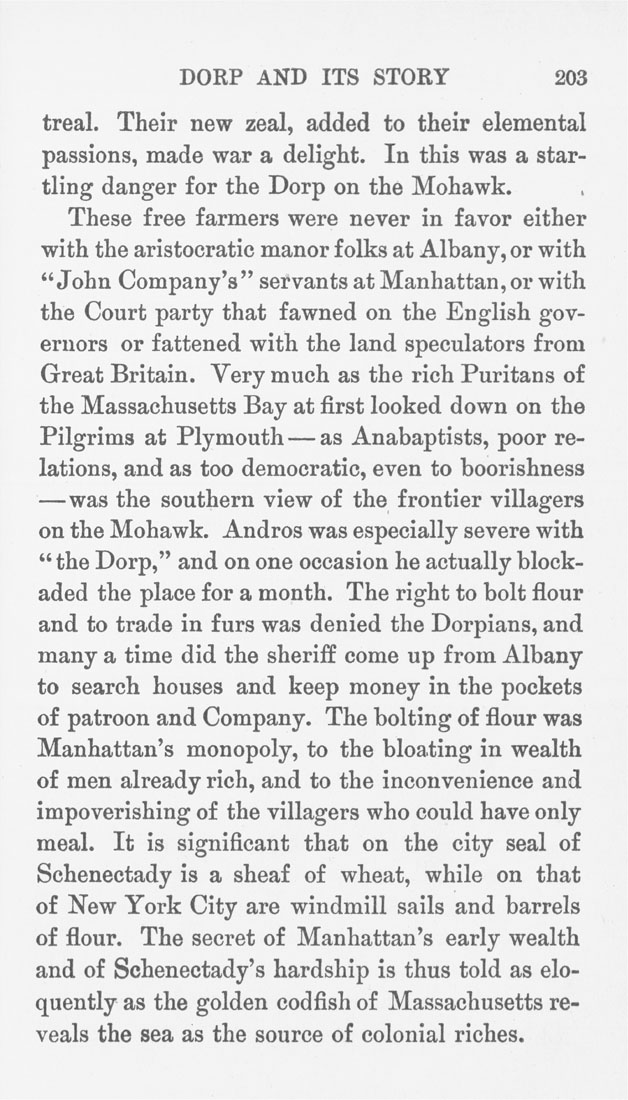DORP AND ITS STORY 203
treal. Their new zeal, added to their elemental
passions, made war a delight. In this was a star¬
tling danger for the Dorp on the Mohawk.
These free farmers were never in favor either
with the aristocratic manor folks at Albany, or with
"John Company's" servants at Manhattan, or with
the Court party that fawned on the English gov¬
ernors or fattened with the land speculators from
Great Britain. Very much as the rich Puritans of
the Massachusetts Bay at first looked down on the
Pilgrims at Plymouth—as Anabaptists, poor re¬
lations, and as too democratic, even to boorishness
—was the southern view of the frontier villagers
on the Mohawk. Andros was especially severe with
" the Dorp," and on one occasion he actually block¬
aded the place for a month. The right to bolt flour
and to trade in furs was denied the Dorpians, and
many a time did the sheriff come up from Albany
to search houses and keep money in the pockets
of patroon and Company. The bolting of flour was
Manhattan's monopoly, to the bloating in wealth
of men already rich, and to the inconvenience and
impoverishing of the villagers who could have only
meal. It is significant that on the city seal of
Schenectady is a sheaf of wheat, while on that
of New York City are windmill sails and barrels
of flour. The secret of Manhattan's early wealth
and of Schenectady's hardship is thus told as elo¬
quently as the golden codfish of Massachusetts re¬
veals the sea as the source of colonial riches.
|








